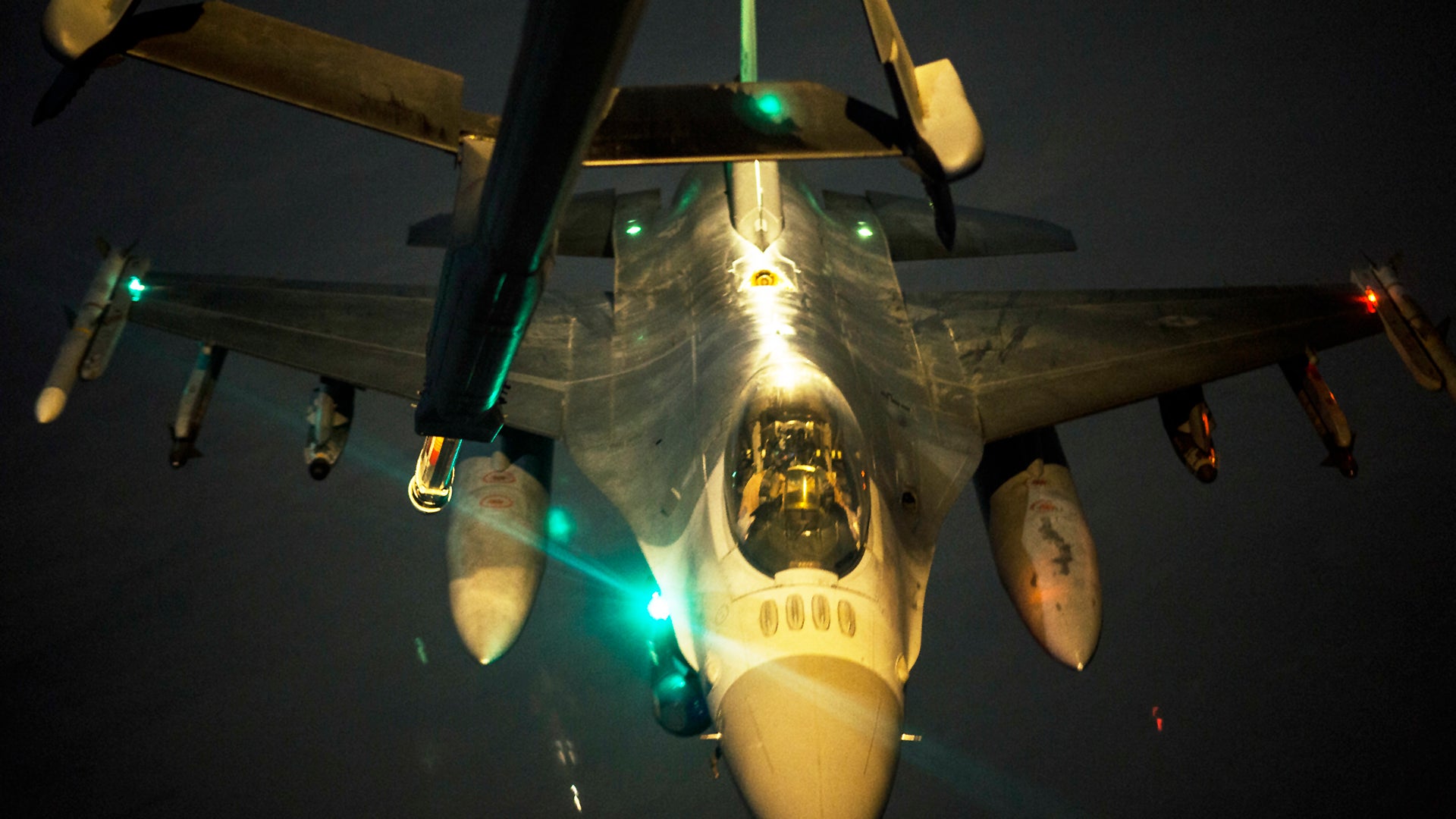The U.S. military has now offered additional details about the withering firepower it employed during a three hour battle to beat back a battalion-sized force that threatened American troops and their local partners at a remote base in northern Syria. Coming as the United States is trying to draw down in Iraq and Syria and shift its attention to Afghanistan, the incident underscores how difficult it might be for the remaining U.S. troops to not to get wrapped up in the broader Syrian conflict.
According to the Pentagon, the incident began after approximately 500 troops allied with Syrian dictator Bashar Al Assad crossed to the eastern side of the Euphrates River near the city of Deir ez-Zor with tanks, artillery, and other heavy weapons on Feb. 7, 2018. That force passed over a formal de-confliction line that the United States and Russia have set up to try and separate their activities and avoid these skirmishes. It subsequently used tanks or artillery to fire at least 30 rounds at a headquarters run by the Syrian Democratic Forces (SDF), a U.S.-backed local force, the bulk of which are Kurds. American advisers, likely special operations forces, were also at the site and subsequently called in a flurry of air and artillery strikes.
“F-22A Raptors and MQ-9B Reapers, were overhead providing protective overwatch, defensive counter air and [intelligence, surveillance and reconnaissance] support as they have 24/7 throughout the fight to defeat ISIS,” U.S. Air Force Lieutenant Colonel Damien Pickart, a spokesman for Air Forces Central Command, told Military.com in a statement. “Following a call for support from Air Force Joint Terminal Attack Controllers, a variety of joint aircraft and ground-based artillery responded in defense of our SDF partners, including F-15E Strike Eagles.”
In the end, U.S. Air Force AC-130 gunships, F-15E Strike Eagle and F-22 Raptor jets, and MQ-9 Reaper drones, along with U.S. Army AH-64 Apache attack helicopters and U.S. Marine Corps artillery all took part in the response. Those various assets killed approximately a fifth of the total enemy contingent and destroyed a significant portion of their equipment.
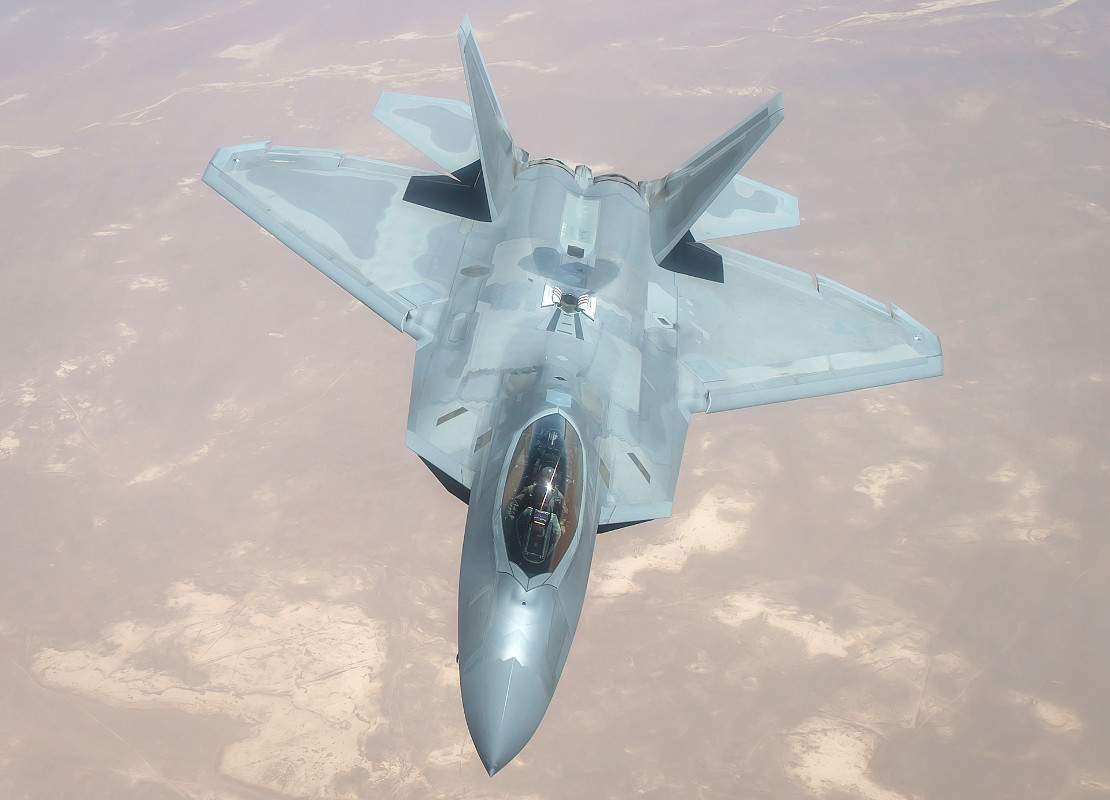
It’s not the first time any of these assets have taken part in operations in Syria. It’s also not the first time American aircraft have discouraged forces aligned with Assad’s regime in Damascus from approaching SDF positions or outright attacked them. But the size and scope of the response underscores both the apparent severity of the threat and that the United States has no choice but to remain heavily committed to operations in Syria if it wants to continue having a meaningful presence in the country.
As Colonel Pickart noted, F-22s and MQ-9s have become an increasingly common sight over SDF-controlled areas in Syria for years, keeping watch for threats in the air and on the ground. In 2015, Russia released footage of one of its Su-30 Flanker-C fighter jets flying near a Reaper drone somewhere in Syria.
Then, in August 2016, Raptors swooped in to chase off Syrian combat aircraft in northern Syria that appeared to be setting up to attack U.S.-backed fighters and their special operations forces advisers. A U.S. Navy F/A-18E Super Hornet actually short down a Syrian Arab Air Force Su-22 Fitter jet in June 2017. More recently, in December 2017, one of the stealth fighters nearly collided with a Russian Su-25 Frogfoot ground attack aircraft during a contentious engagement along the Euphrates River.
It’s not clear if either of these types of aircraft conducted actual strikes against the pro-Assad forces or simply monitored their activities and kept a guard up in case Syria’s Air Force attempted to intervene. The F-15E Strike Eagles, which can carry much more larger payloads than either the F-22 or the MQ-9, were likely more significant contributors in the hours-long fight. In a series of incidents in 2017, F-15Es similarly raced to aid of American special operators and their local partners in the Southern Syrian city of At Tanf, attacking columns of Iranian-backed militiamen in armored and other vehicles, as well as shooting down two Iranian-made drones.
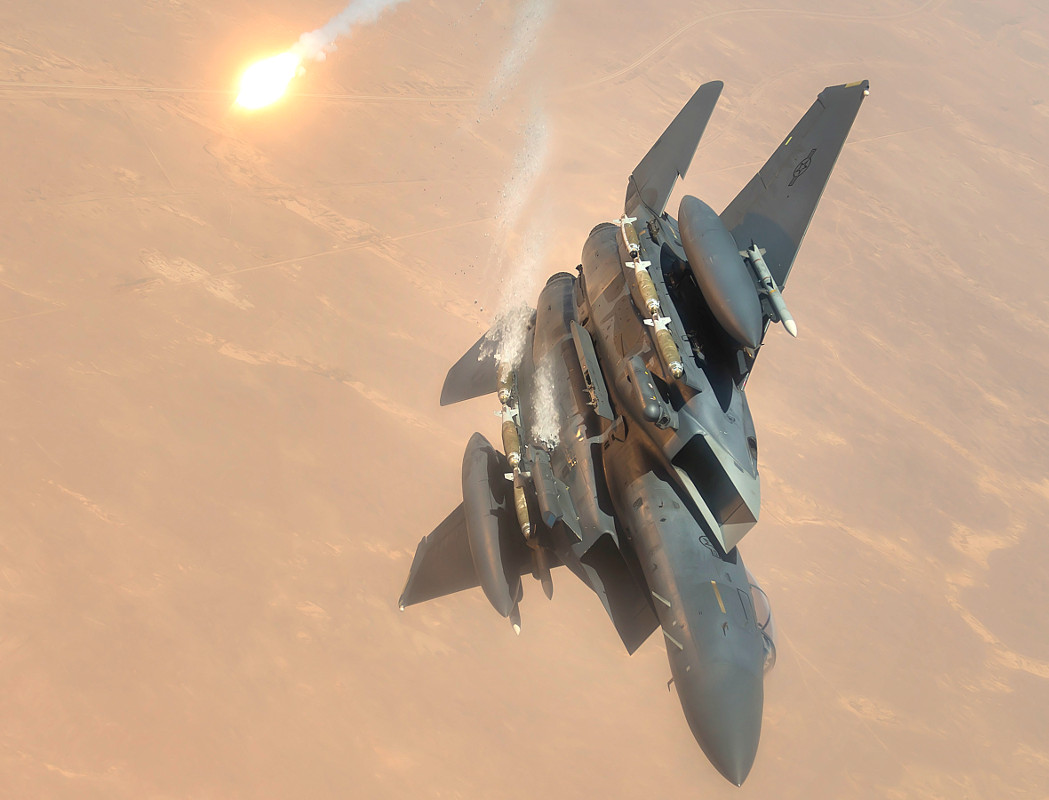
The AC-130s would have been a valuable tool in such a protracted engagement, too. Though we don’t know what models or how many in total took part in the counter-attack, the AC-130Us and Ws, the two types in active service at present, can loiter over the battlefield for extended periods of time.
The AC-130U Spooky is a true gunship, packing 25mm and 40mm guns and a huge 105mm howitzer. The AC-130W Stinger II is more geared toward employing precision guided munitions, such as the AGM-176 Griffin missile and the GBU-39/B Small Diameter Bomb, but the most recent Block 20 aircraft have both a 30mm cannon and the 105mm howitzer, as well.

With their automatic cannons, these aircraft are also particularly well suited to “danger close” gun runs against enemy forces that are situated close to friendly positions. They can also deploy a huge volume of fire in a fairly short period of time, and dismantling a mechanized column arrayed along a road would be a “feeding frenzy” for such an asset. The low- and slow-flying Apaches could have provided more close-in fire support with Hellfire missiles, laser-guided rockets, and their 30mm cannon, as well. It’s not clear how close the enemy force actually got to SDF- and America-occupied positions, though.
U.S. Marine Corps artillery, including both 155mm M777 towed howitzers and 227mm High Mobility Artillery Rocket Systems (HIMARS), has already been stars of the fight against ISIS in both Iraq and Syria for years, too. Marine M777s, often firing GPS-guided shells, were vital in U.S.-backed SDF-led effort to eject the terrorists from their de facto capital in the Syrian city of Raqqa in 2017, also known as Operation Eclipse.
According to a report by Marine Corps Times, Marine howitzers fired more shells during that offensive than they have been during any other operation of a similar length since the Vietnam War. The Marines even burned out the barrel in one of the weapons, meaning that they had shot so many rounds through it that it was no longer safe to use.

Conspicuously absent from this fire support armada was the Air Force’s A-10 Warthog ground attack aircraft, which has a massive 30mm cannon specifically designed to take out heavy armor, can carry a large number of other precision guided bombs and missiles, and can stay on station for long periods at a time. But their absence also highlights a worrying conundrum for the U.S. military in both Iraq and Syria.
In January 2018, the Air Force shifted the Warthogs, as well as other aircraft, to operations over Afghanistan as part of the U.S. government’s attempt to shift its primary focus to that conflict. Officially, the U.S. military has ended major combat operations in Iraq and Syria against ISIS and is seeking to draw down its commitments in both countries.
The video below shows an A-10 attacking insurgents in a car in Afghanistan after arriving in the country in January 2018.

“Afghanistan has become CENTCOM’s [U.S. Central Command’s] main effort,” U.S. Air Force Major General James Hecker, who is in charge of both U.S. and other coalition air forces in that country, told Defense News. “This has allowed CENTCOM to shift more assets our way, which will significantly improve our ability to assist the Afghans.”
At the same time, the United States has made it clear that it plans to stay in Iraq and Syria indefinitely and is continuing to support the development of local security forces in those countries, ostensibly to prevent ISIS from regrouping. This has drawn the ire of Assad’s government and its principle benefactors, Russia and Iran, who all say that the American presence in Syria is an illegal occupation to begin with.
Syrian forces will defeat the “conspiracy, end the presence of the US, its agents and tools in Syria, establish full control over the entire Syrian territory, and preserve the country’s sovereignty,” Syria’s state-run SANA news agency reported in January 2018, citing an unnamed official from the country’s Foreign Ministry. “The Ministry considered any Syrian citizen who takes part in the US-backed militia as a traitor to the Syrian state and people and will be treated as one, adding that these militias will hinder reaching a political solution to the situation in Syria,” the outlet added.
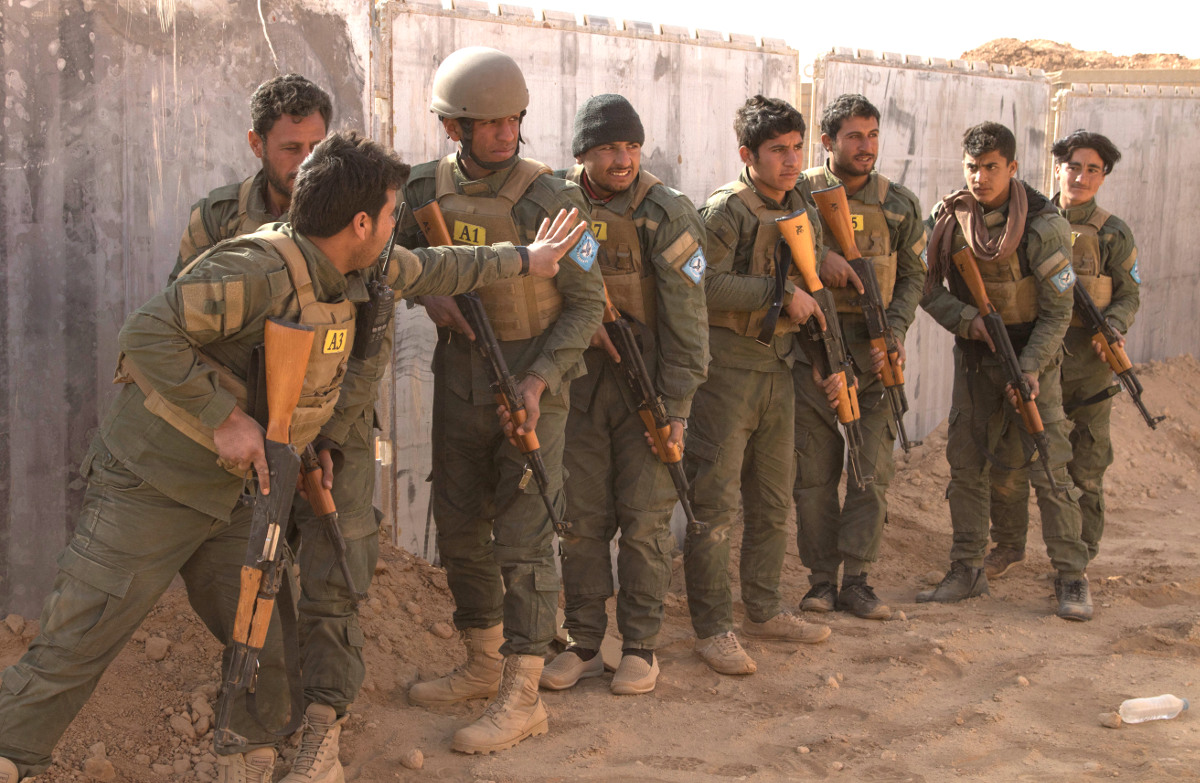
As we at The War Zone have warned of regularly for years, with the immediate terrorist threat receding in Iraq and Syria, other competing agendas are increasingly coming to the forefront in an already complicated conflict. America’s plans for a more permanent and predominantly Kurdish security force in Syria has already prompted Turkish intervention in the country’s northwest, threatening to divide the SDF’s loyalty, and put Turkey and the United States on a dangerous collision course, which you can read about in detail here.
“We are not getting involved in the Syrian Civil War,” U.S. Secretary of Defense James Mattis insisted to reporters on Feb. 8, 2018. “I have no idea why they would attack there.”
Though common U.S. government talking points, they belie that American troops are in parts of Syria, which continues to be in the grips of civil war, and that the Syrian government, its authority legitimate or not, wishes they weren’t there at all. Assad also appears to have become more anxious to reassert control over more territory, launching a particularly brutal offensive into the rebel-held Idlib province in the northwestern corner of the country with Russian support and chemical weapons.
Now, those aspirations may have begun to stretch eastward, with the pro-regime forces that attacked the SDF-held positions possibly having been on a mission to try and retake the Omar oil field and Conoco gas field. The American-backed group has controlled the two lucrative areas since the final months of 2017.
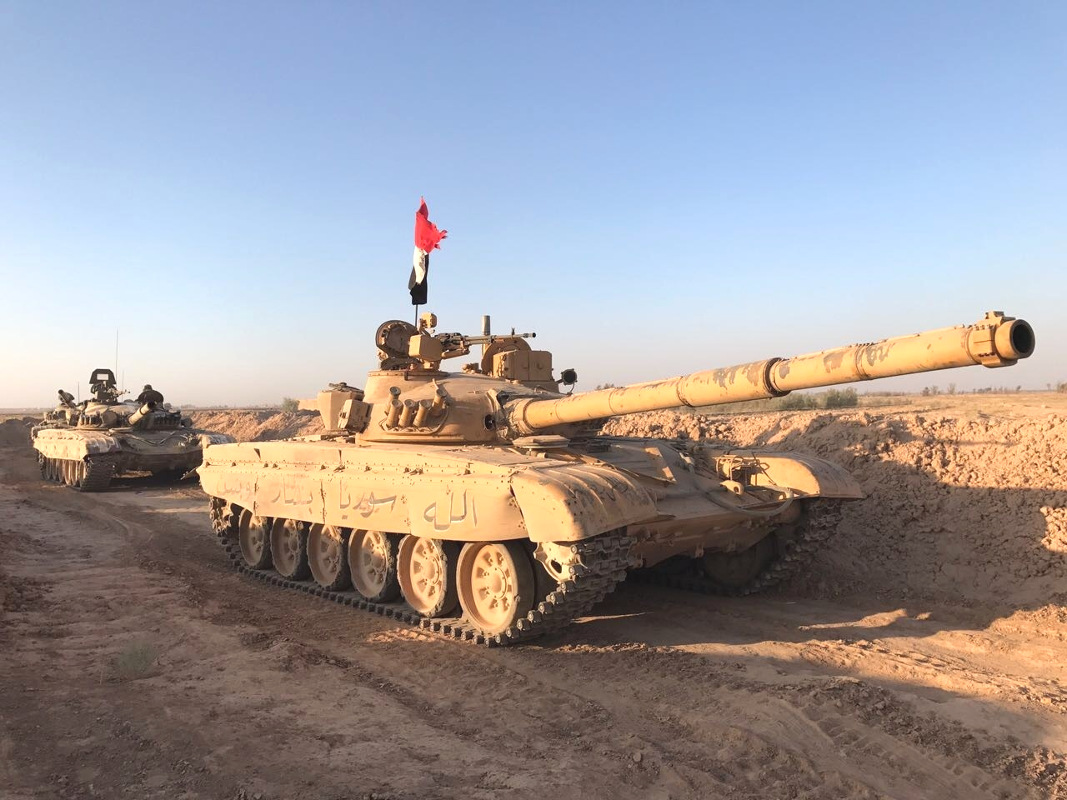
And whether or not Russia was directly or tacitly involved in the attack remains a serious question. Initial reports suggested the Pentagon was reviewing the available information to see if Russian private military contractors had taken part in the incident, though Mattis subsequently said the U.S. government did not believe this was the case.
“I think the Russians would’ve told us,” Mattis said, adding the U.S. military used a hotline to contact their Russian counterparts during the battle, who in turn said they were not involved. “We have always known that there are elements in this very complex battle space that the Russians did not have, I would call it, control of.”
However, getting a battalion-size force with tanks and other heavy vehicles across the Euphrates would have been a substantial undertaking requiring bridge-building equipment or light ferries since the only formal bridge had long been destroyed. It seems hard to imagine the Syrian military or its allied militia would have been able to do this with at least indirect support from Russia, whether through the delivery of the necessary equipment or new or existing military construction work.
In September 2017, Russian forces did build a number of bridges over the Euphrates near Deir ez-Zor using Soviet-era mobile equipment. They also deployed PMM-2Ms, a tracked vehicle that can act individually as either a small ferry or in a chain forming a larger barge or a fixed pontoon bridge. The Syrians also have some old Soviet-era amphibious transport vehicles and pontoon bridging equipment and employed those systems in September 2017 to cross the Euphrates, as well.

But as of Feb. 6, 2018, there were reports that the Russian pontoon bridge, the main artery across the river, had broken up due to a sudden rise in the water level. Russian state-owned media outlet Sputnik subsequently implied that the SDF, who also control Tabqa dam further upstream, might have unleashed a torrent of water to destroy the span. This further reinforces that crossing the river with heavy vehicles the next day would have required significant effort.
The temporary crossing points had already presented a challenge to formal, but already debatably effective de-confliction line that is supposed to separate American and Russian activities in Syria. The Russians routinely cross this boundary and it’s also clear that it has no direct impact on Syrian government’s operations or those of its militias or other allies.
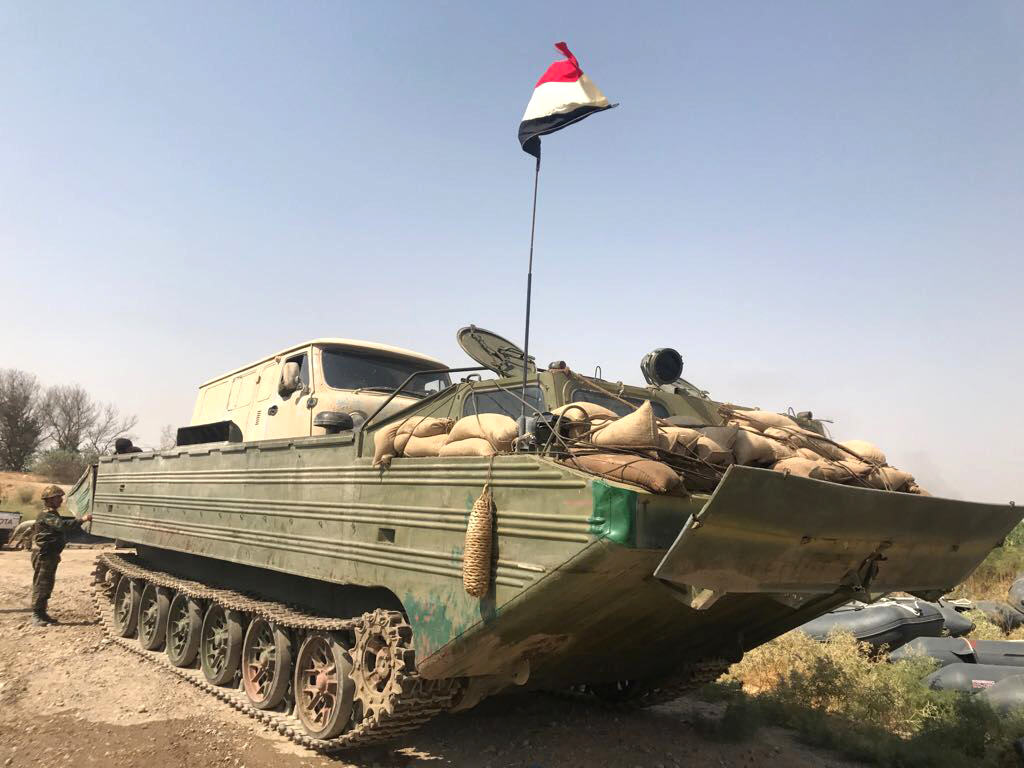
On top of that, the Russians have already challenged the legitimacy of the American response to the attack and offered their continued support to Assad’s government. Syrian authorities have in turn decried what happened as a “massacre” and “a war crime,” though it’s not clear what international statues they might be trying to invoke. The United States has repeatedly stressed its inherent right to self-defense in counter-attacking against the pro-Assad contingent.
“We are there [in Syria] to defeat ISIS,” Dana White, the Pentagon’s top spokesperson, said in her own press briefing on Feb. 8, 2018. “They are on the run, but it’s not finished, and so there’s still work to be done.”
But with the imminent threat of those terrorists gone, other actors in the country are already turning their attention elsewhere. American troops will only find themselves in an increasingly precarious position the more they present an obstacle for the Syrian government’s agenda, or that of Russia or its other partners.
The United States can say it has no intention of getting sucked into the larger conflict in Syria, but the parties that are will get a say, too. And the more U.S. forces act in self-defense, especially on the scale we’ve just seen, the more likely they are to create and reinforce a view that they are actually a very active participant in the broader fighting.
Contact the author: joe@thedrive.com
